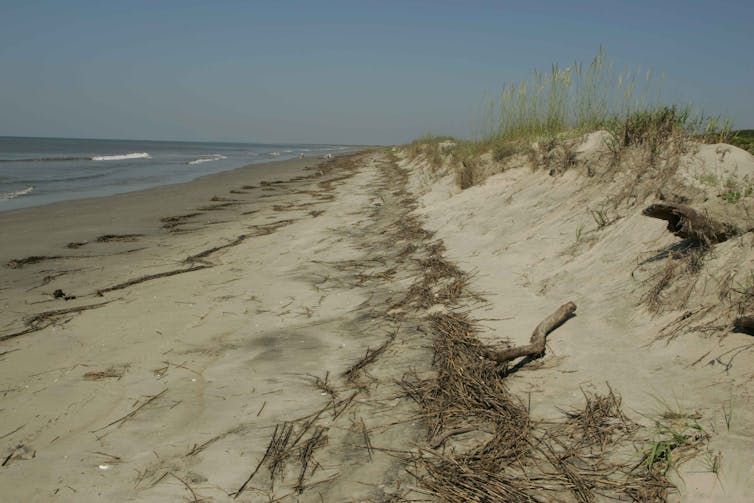The author is professor of environmental and geographic sciences at Bournemouth University, UK.
Unless you are a fan of reading or water sports, building sand castles is a must for seaside vacations. But how do you make your castle as majestic as it is solid? Luckily, there is a scientific formula that might help you.
As a sedimentologist, that is to say a specialist in rock deposits left by water, wind and glaciers, in 2004 I started to think about the type of beach that was best suited to the construction of castles of sand. I conducted the survey by comparing the sand of the ten most popular beaches in Britain (at the time). Although in reality you can build castles on any beach, Torquay came out on top of my ranking, with its beautiful red sands.
But once the beach has been selected, you still have to find the ideal location. This question is more a function of individual preferences: some prefer to settle not far from the parking lot, to be able to get out in the event of a downpour, while others prefer the proximity of a cafe. Still others choose an isolated corner, perhaps better protected from the wind by a natural promontory.
If you want to build a real fortress, you better have your building stand upright. And for that, you need solid sand! The strength of sand depends on two factors: the properties of the grains that compose it and the water that allows them to bind together. The more angular the grains, the better they fit together. However, the more the grain of sand has been transported by the elements, the smoother it is. This is why microscopic fragments of seashells are a wise choice for building castles. Finally, the finer the grains, the better they retain water. And the issue of water is crucial in the case at hand!
If the sand contains too much water, your castle will drip, if there is too little, it will crumble. So you need to find the right proportions, so that your castle stands up straight, and for a long time. It all depends on the water surface tension, or “water meniscus”, this phenomenon which makes that a glass of water placed on a damp and smooth support can seem difficult to move.
The magic formula
Our experience has allowed us to establish that to build the perfect sand castle, you need one bucket of water for every eight buckets of dry sand. Or if you prefer, here’s the magic formula: water = 0.125 x sand. But if you don’t have scientific material, don’t panic! All you need to do is find a location in the strip of sand between the high tide line – easily spotted by a cluster of seaweed and marine debris – and the low tide line. Keep in mind, however, that this area moves during the day, depending on the tides.

The following tip relates to the quality of the tools. In my experience, there is a direct correlation between the age of the builder, the size of the excavator and the speed at which boredom sets in. Adults find mini excavators very frustrating, and children would love to use larger ones, but find it difficult to handle them. So that the team atmosphere remains harmonious, therefore plan a wide selection of tools. The size and shape of the bucket is also important. Prefer simple, round buckets to those that take the shape of a castle with crenellated towers. A round bucket will allow you to produce lots of tricks and details to end up with the monument of your dreams, using your imagination.
And as you build, keep a thought for the story, not just the imagination of the castle and its age-old fairy tale cohort, but also the actual story of the sand you handle. Each grain is indeed a fragment of rock that encapsulates a long history of extinct mountains, ancient rivers, dinosaur infested swamps and seas, climates and events of the past: so many elements that tell the story ofhistory of our planet.
You can of course be satisfied with a modest castle, with pretty towers, ramparts and moats, but the castles that make the difference on the beach and which are the most successful are also the most imposing. Think big! Pebbles, seashells, driftwood and feathers can embellish your work. And then, let’s be honest: a sandcastle is made to be admired. And while there is a bit of science behind the perfect castle, be sure to have fun building it.![]()
–


